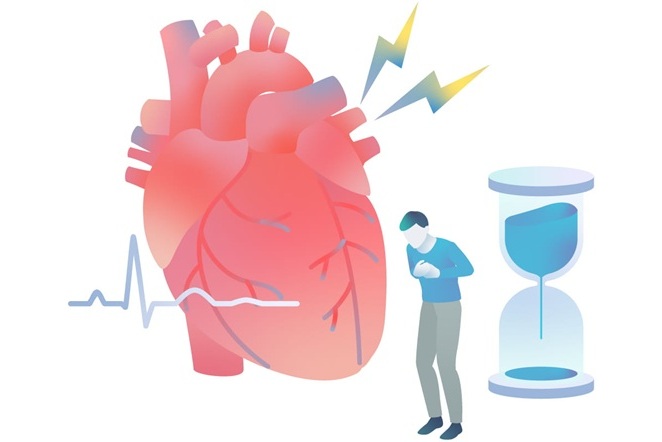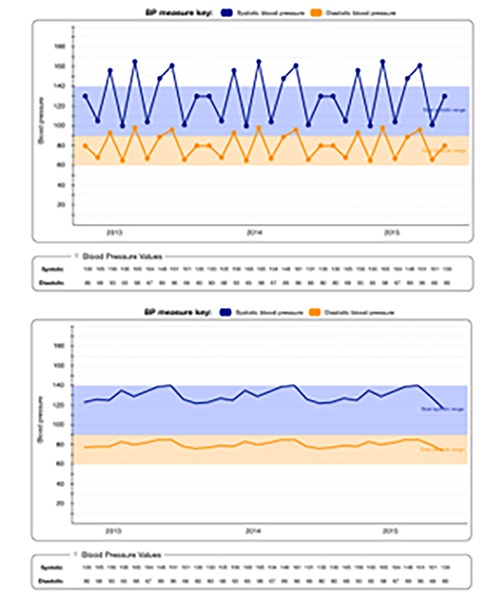Drone Delivery System Transports Samples Between Hospitals
|
By HospiMedica International staff writers Posted on 05 Jun 2019 |

Image: A drone making a delivery in Zurich (Photo courtesy of Swiss Post).
Swiss Post (Bern, Switzerland) is laying out a drone delivery system to convey laboratory samples between hospitals that will arrive function twice as fast as road transport.
A pilot study, carried out in collaboration with the Federal Office of Civil Aviation, Skyguide, which monitors Swiss airspace, and local authorities, will use the drones to transport urine and blood samples five to ten times a day between University Hospital Zürich (USZ; Switzerland) and the USZ Irchel campus, which are 2.5 kilometers apart. The time savings are expected to help patients, for example those under anesthesia, waiting for laboratory results.
Similar pilot studies were carried out in Lugano between Ospedale Italiano and the Ospedale Civico, two hospitals belonging to the EOC group, which are also located 600 meters apart. The pilot study, which began in March 2017, conducted 2,100 flights without any problems. And as of December 2018, Swiss Post regularly transports lab samples across the Zurich lake basin on behalf of Zentrallabor Zürich. The route, which is 5.8 kilometers long, crosses Lake Zurich to link the ZLZ emergency laboratory at Hirslanden Klinik Im Park with the main lab in Zollikon, and is five times faster than conventional road transport.
“All findings from the various drone projects are of central importance and enable procedures to be improved. Swiss Post not only wants to know how beneficial these drones are to hospitals and labs, but also how residents are responding,” stated Swiss Post spokesman Olivier Flüeler. “Experiences gained in Lugano, Bern, and Zurich are good. The drones are flying for medical purposes since consignments in this sector are often urgent, and the speed at which they are delivered can be crucial. This is why they are generally widely accepted.”
Swiss Post has also started experimenting with other futuristic delivery methods. In September 2016 it sent small, autonomous robots out onto city pavements and pedestrian zones to deliver packages in a series of tests authorized by Switzerland’s Federal Roads Office. The robots were designed to deliver special mailings, including packages that require flexible, rapid local delivery, such as food or medicine. The tests, conducted in Bern, Köniz, and Biberist, were the result of a partnership with British company Starship Technologies.
Related Links:
Swiss Post
University Hospital Zürich
A pilot study, carried out in collaboration with the Federal Office of Civil Aviation, Skyguide, which monitors Swiss airspace, and local authorities, will use the drones to transport urine and blood samples five to ten times a day between University Hospital Zürich (USZ; Switzerland) and the USZ Irchel campus, which are 2.5 kilometers apart. The time savings are expected to help patients, for example those under anesthesia, waiting for laboratory results.
Similar pilot studies were carried out in Lugano between Ospedale Italiano and the Ospedale Civico, two hospitals belonging to the EOC group, which are also located 600 meters apart. The pilot study, which began in March 2017, conducted 2,100 flights without any problems. And as of December 2018, Swiss Post regularly transports lab samples across the Zurich lake basin on behalf of Zentrallabor Zürich. The route, which is 5.8 kilometers long, crosses Lake Zurich to link the ZLZ emergency laboratory at Hirslanden Klinik Im Park with the main lab in Zollikon, and is five times faster than conventional road transport.
“All findings from the various drone projects are of central importance and enable procedures to be improved. Swiss Post not only wants to know how beneficial these drones are to hospitals and labs, but also how residents are responding,” stated Swiss Post spokesman Olivier Flüeler. “Experiences gained in Lugano, Bern, and Zurich are good. The drones are flying for medical purposes since consignments in this sector are often urgent, and the speed at which they are delivered can be crucial. This is why they are generally widely accepted.”
Swiss Post has also started experimenting with other futuristic delivery methods. In September 2016 it sent small, autonomous robots out onto city pavements and pedestrian zones to deliver packages in a series of tests authorized by Switzerland’s Federal Roads Office. The robots were designed to deliver special mailings, including packages that require flexible, rapid local delivery, such as food or medicine. The tests, conducted in Bern, Köniz, and Biberist, were the result of a partnership with British company Starship Technologies.
Related Links:
Swiss Post
University Hospital Zürich
Latest Health IT News
- Printable Molecule-Selective Nanoparticles Enable Mass Production of Wearable Biosensors
- Smartwatches Could Detect Congestive Heart Failure
- Versatile Smart Patch Combines Health Monitoring and Drug Delivery
- Machine Learning Model Improves Mortality Risk Prediction for Cardiac Surgery Patients
- Strategic Collaboration to Develop and Integrate Generative AI into Healthcare
- AI-Enabled Operating Rooms Solution Helps Hospitals Maximize Utilization and Unlock Capacity
- AI Predicts Pancreatic Cancer Three Years before Diagnosis from Patients’ Medical Records
- First Fully Autonomous Generative AI Personalized Medical Authorizations System Reduces Care Delay
- Electronic Health Records May Be Key to Improving Patient Care, Study Finds
- AI Trained for Specific Vocal Biomarkers Could Accurately Predict Coronary Artery Disease
Channels
Critical Care
view channel
Breakthrough AI Technology Accurately Assesses Heart Failure Severity
Heart failure (HF) is a complex condition where the heart cannot effectively pump blood to meet the body’s needs due to underlying medical issues. It is marked by recurring episodes and frequent hospitalizations.... Read more
New Approach to Visualizing Blood Pressure Data Can Help Better Manage Hypertension Patients
Sometimes, a patient’s blood pressure may be elevated in a doctor's office but normal at home, a phenomenon known as white coat hypertension. It is estimated that 10% to 20% of high blood pressure diagnoses... Read moreSurgical Techniques
view channel
DNA Origami Improves Imaging of Dense Pancreatic Tissue for Cancer Detection and Treatment
One of the challenges of fighting pancreatic cancer is finding ways to penetrate the organ’s dense tissue to define the margins between malignant and normal tissue. Now, a new study uses DNA origami structures... Read more
Pioneering Sutureless Coronary Bypass Technology to Eliminate Open-Chest Procedures
In patients with coronary artery disease, certain blood vessels may be narrowed or blocked, requiring a stent or a bypass (also known as diversion) to restore blood flow to the heart. Bypass surgeries... Read more
Intravascular Imaging for Guiding Stent Implantation Ensures Safer Stenting Procedures
Patients diagnosed with coronary artery disease, which is caused by plaque accumulation within the arteries leading to chest pain, shortness of breath, and potential heart attacks, frequently undergo percutaneous... Read more
World's First AI Surgical Guidance Platform Allows Surgeons to Measure Success in Real-Time
Surgeons have always faced challenges in measuring their progress toward surgical goals during procedures. Traditionally, obtaining measurements required stepping out of the sterile environment to perform... Read morePatient Care
view channel
Portable Biosensor Platform to Reduce Hospital-Acquired Infections
Approximately 4 million patients in the European Union acquire healthcare-associated infections (HAIs) or nosocomial infections each year, with around 37,000 deaths directly resulting from these infections,... Read moreFirst-Of-Its-Kind Portable Germicidal Light Technology Disinfects High-Touch Clinical Surfaces in Seconds
Reducing healthcare-acquired infections (HAIs) remains a pressing issue within global healthcare systems. In the United States alone, 1.7 million patients contract HAIs annually, leading to approximately... Read more
Surgical Capacity Optimization Solution Helps Hospitals Boost OR Utilization
An innovative solution has the capability to transform surgical capacity utilization by targeting the root cause of surgical block time inefficiencies. Fujitsu Limited’s (Tokyo, Japan) Surgical Capacity... Read more
Game-Changing Innovation in Surgical Instrument Sterilization Significantly Improves OR Throughput
A groundbreaking innovation enables hospitals to significantly improve instrument processing time and throughput in operating rooms (ORs) and sterile processing departments. Turbett Surgical, Inc.... Read moreBusiness
view channel
Expanded Collaboration to Transform OR Technology Through AI and Automation
The expansion of an existing collaboration between three leading companies aims to develop artificial intelligence (AI)-driven solutions for smart operating rooms with sophisticated monitoring and automation.... Read more















